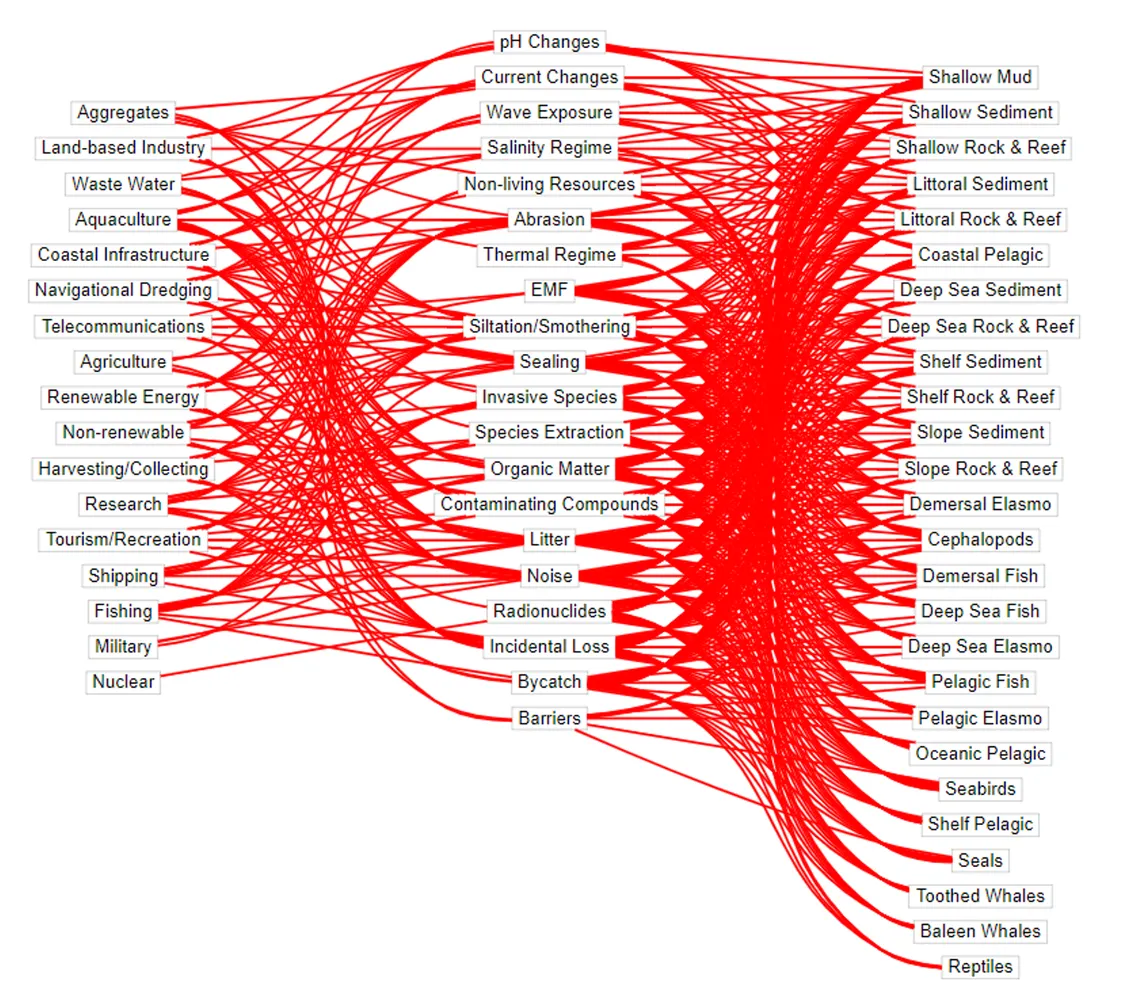Scoping the Atlantic: the latest from the regional case studies
By Debbi Pedreschi
The MISSION ATLANTIC case study teams met virtually in September to present and discuss their progress to date on their regional Integrated Ecosystem Assessments (IEAs). All seven case study teams have been hard at work over the last year diving deeply into learning and developing common semi-quantitative risk assessment methods, and discussing the essential elements that should be included. This work is a critical first step in the IEA process, known as ‘scoping’ where the wide range of sectors creating pressures in our marine environments are identified, and the parts of the ecosystems that are affected by them. We then identify the interactions that occur between each component are then identified, and risk scores applied to these interactions to identify where the highest risk occurs in the system. This enables comparisons between sectors and pressures to see which ones are producing the highest threats to our ecosystem.

Figure: An example ‘horrendogram’ from the Celtic Sea case study illustrating the complexity of the socio-ecological system
The power of using such an approach is that it is holistic – it takes into account the ‘big picture’ and examines the entire suite of potential impacts. This allows us to identify areas that we have long known cause pressures (and so are ‘data-rich’), but also potentially to flag areas of concern where we might not have as much knowledge or data and to highlight these for further research, investigation and monitoring.
Despite the challenges presented by COVID-19, all MISSION ATLANTIC case study teams have now completed this first step and are in various stages of stakeholder engagement. The engagement process has taken a different form than originally anticipated, with the teams having to be innovative in how to facilitate the process and provide an interactive forum online as in-person meetings have not been an option in most locations due to the pandemic. MISSION ATLANTIC stakeholder engagement involves presenting the identified IEA components and risks, and ground-truthing outputs with stakeholders to check that it reflects their understanding of the system, and importantly, flagging if there is anything we have missed. From here we continue to work with the stakeholders, which may be industry representatives, environmental representatives, managers and even other scientists, to identify what are the critical management questions that IEA, and Mission Atlantic in particular, can help to address. This process helps to ensure that our work is grounded in reality, and most importantly, is useful and applicable within the region under study.
This first step informs the next stages of the MISSION ATLANTIC cycle, and will help to direct work undertaken in other work packages. The individual case study analyses will also help to inform the development of the whole Atlantic IEA.
Contact details:
Debbi Pedreschi: debbi.pedreschi@marine.ie
